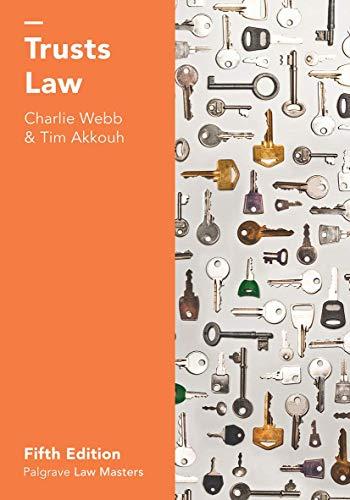Question
My answers are below! Could you please shorten the length down of the sentences, thank you! 1. What are the two main considerations the U.S.
My answers are below! Could you please shorten the length down of the sentences, thank you!
1. What are the two main considerations the U.S. Patent and Trademark Office uses to determine if there is a likelihood of consumer confusion?
The US Patent and Trademark Office (USPTO) employs two primary considerations to assess the likelihood of consumer confusion regarding trademarks Firstly, the USPTO evaluates the similarity of the marks in appearance, sound, meaning, and overall commercial impression This analysis involves comparing the marks in their entirety, considering factors such as visual appearance, phonetic pronunciation, and conceptual similarity Secondly, the USPTO examines the relatedness of the goods or services associated with the marks This entails assessing whether the goods or services offered under the marks are similar or related in nature, purpose, function, distribution channels, or target consumers The USPTO considers the overlap in the marketplace between the goods or services, as well as the potential for consumers to mistakenly believe that the goods or services originate from the same source due to the similarity of the marks These two main considerations, similarity of the marks and relatedness of the goods or services, play a crucial role in determining whether there is a likelihood of consumer confusion, which is a key factor in the trademark registration process
2. How does the USPTO consider relatedness between two products or services?
When evaluating the relatedness between two products or services, the USPTO considers various factors to determine the extent of overlap or connection in the marketplace This assessment involves examining the nature, purpose, and function of the goods or services, as well as their distribution channels and target consumers The USPTO evaluates whether the products or services are complementary, competitive, or otherwise connected in a way that could lead consumers to mistakenly associate them with the same source Additionally, the USPTO considers the degree of care exercised by consumers when purchasing the goods or services, as well as any evidence of actual confusion in the marketplace By analyzing these factors, the USPTO assesses the relatedness between two products or services and determines whether their similarity may result in consumer confusion regarding their source or origin This analysis is crucial in determining the registrability of trademarks and protecting consumers from confusion in the marketplace
Step by Step Solution
There are 3 Steps involved in it
Step: 1

Get Instant Access to Expert-Tailored Solutions
See step-by-step solutions with expert insights and AI powered tools for academic success
Step: 2

Step: 3

Ace Your Homework with AI
Get the answers you need in no time with our AI-driven, step-by-step assistance
Get Started


